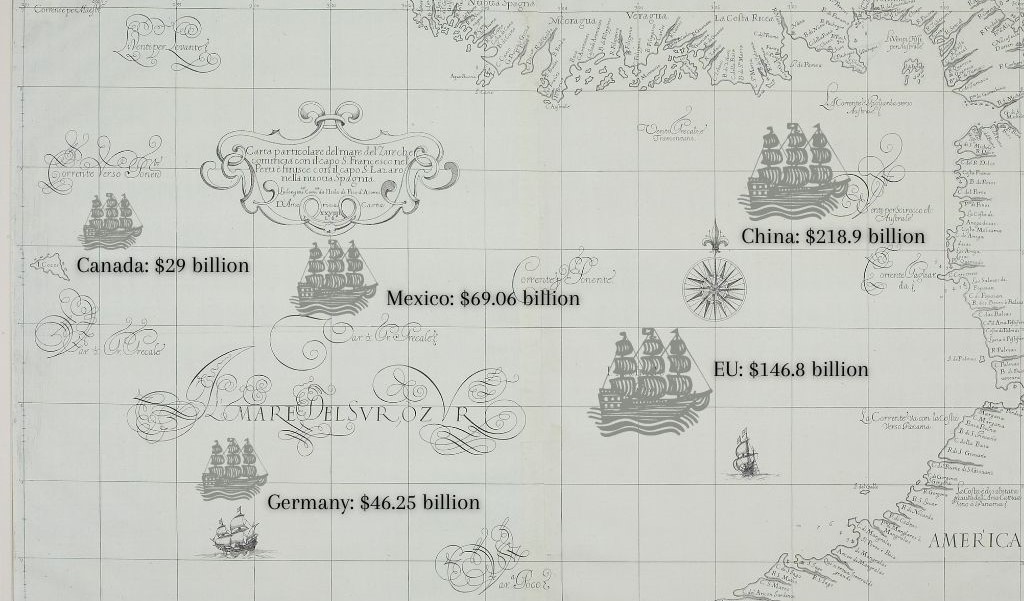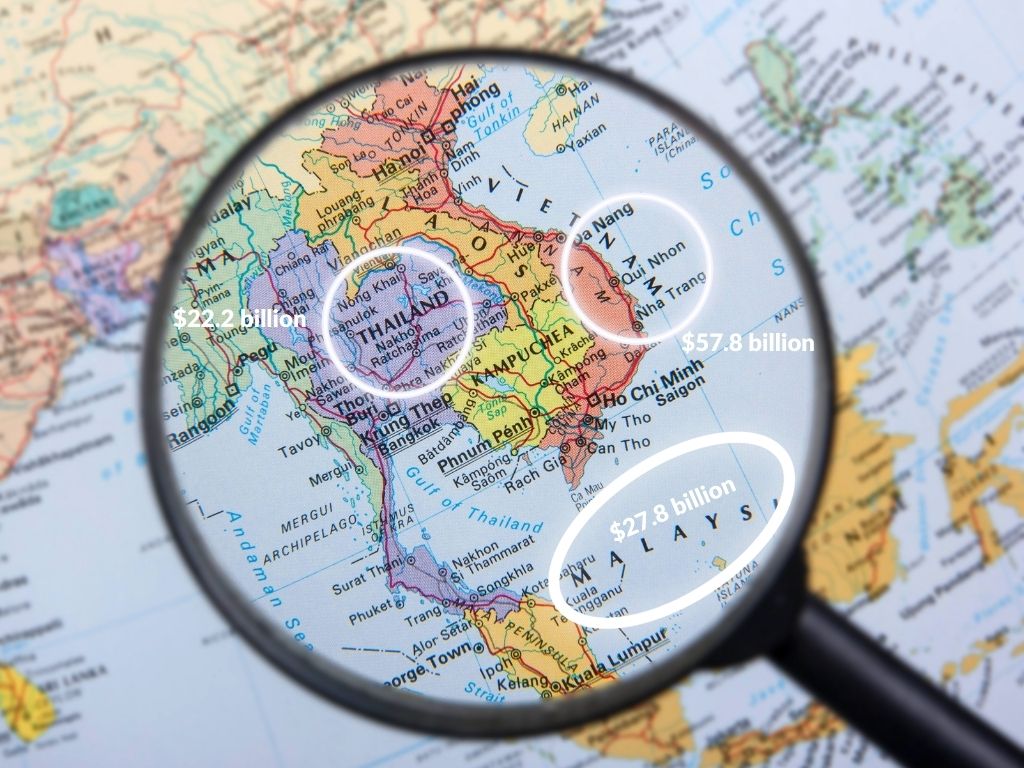The August goods and services trade deficit for August rose by $3 billion to $73.3 billion, showing that dispute supply chain disruptions, consumer demand for goods, U.S. dependence on imports, and record stimulus will combine to deliver a $1 trillion goods deficit in 2021, based on data from the U.S. Bureau of Economic Analysis (BEA), released on Tuesday.
The goods deficit for the month of August was $88.16 billion, up from July’s revised number of $86.9 billion, on a Census-weighted basis. And even though August’s difference between U.S. exports and imports was not a record-breaker for the year, the January to August goods deficit is now $715.79 billion. If the next four months each post a $72 billion monthly goods deficit, then the total year-ending deficit for goods would be $1.004 trillion. To put that into perspective, the entire Mexican economy produced $1.07 trillion in GDP in 2020. The U.S. trade deficit in goods alone would be equal to the size of the entire Mexican economy. If just a quarter of those goods were produced here, think of the impact it would have on the U.S. economy – it would grow the manufacturing base and increase America’s middle class.
[everviz hash=eLuXH0kr- type=highcharts]
“The size of our goods deficit, along with the severe supply chain disruptions which are creating a scarcity of new autos and many other goods, and the skyrocketing prices for shipping and key commodities from oil to silicon make it plain that the only way to achieve a truly resilient U.S. economy is to begin making more products here in the U.S.,” commented CPA chief economist Jeff Ferry.
August exports totaled $213.7 billion, up $1 billion from July. And August imports were $287 billion, up by around $4 billion from July imports.
Overall, the August increase in the goods and services deficit reflected an increase in the goods deficit of $1.6 billion and a decrease in the services surplus of $1.4 billion to $16.2 billion. Services exports include things like foreign students in U.S. education institutions, intellectual property fees, financial services, and international business consulting fees.
Year-to-date, the overall deficit (goods and services) rose 33.7% over 2020. Exports did go up, rising 17.5%. But imports rose even more, up 21.2% so far this year compared to last year.
August’s Biggest Trade Gaps
August figures showed the usual deficits with China ($28.1), European Union ($19.3), Mexico ($6.6), Germany ($5.8), Japan ($5.6), Canada ($5.1), Taiwan ($3.6), South Korea ($3.1), Italy ($3.1), India ($3.0), France ($1.4), and Saudi Arabia ($0.6) as the U.S. has recently returned to oil imports.
Consumer goods drove most of the import traffic, followed by pharmaceutical goods, industrial supplies and cars.
Here is what our year-to-date trade deficits are looking like at the moment in some select countries.

Look at the old Asian Tigers, staging a huge comeback as China has turned them into their outsource partners, and as an increasing number of multinationals shift production out of mainland China and into these three low wage, weak currency nations to avoid tariffs.
 Vietnam has become an outpost for China manufacturing, putting the country dangerously close to being export dependent on the U.S.
Vietnam has become an outpost for China manufacturing, putting the country dangerously close to being export dependent on the U.S.
All three of those countries are the target of a potential anti-dumping investigation of solar panels made by Chinese multinationals there.
The August numbers show once again that the U.S. shift to a service economy years ago has made it the world’s importer of manufactured goods instead. Many believe this has come to the detriment of the American industrial base, and has hurt millions of blue-collar workers.
[everviz hash=cTslC42Jw type=highcharts]












